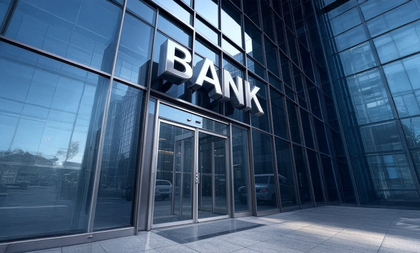Indian banks well-positioned to navigate global uncertainty, tariffs, rate cuts: Report
By IANS | Updated: October 8, 2025 14:10 IST2025-10-08T14:05:35+5:302025-10-08T14:10:16+5:30
New Delhi, Oct 8 Indian banks are well-positioned to navigate global uncertainty, tariffs, rate cuts and a weakening ...

Indian banks well-positioned to navigate global uncertainty, tariffs, rate cuts: Report
New Delhi, Oct 8 Indian banks are well-positioned to navigate global uncertainty, tariffs, rate cuts and a weakening rupee, S&P Global Ratings said in a report on Wednesday.
The global rating firm noted that the financial resilience among Indian corporates has been improving.
Meanwhile, key factors contributing to the resilience of Indian banks include their low exposure to tariff-hit sectors, the deleveraging of companies and a focus on secured retail lending.
"While we expect asset quality to soften, weak loans will remain at 3.0-3.5 per cent and credit costs will rise to 80-90 basis points over the next two years, in our view," the report noted.
It anticipates that the credit costs will rise as the tailwinds from sharp recoveries fade and due to stress in segments such as unsecured retail, SME loans under Indian Rs 10 lakh, and microfinance.
As of August 22, Indian banks' exposure to the tariff-hit textiles and gems and jewellery sectors stands at just 2 per cent of total loans.
These sectors are most vulnerable due to high leverage and low margins.
However, the impact on individual companies will depend on factors such as product mix, sales locations, competitive advantages and their own leverage, the report stated.
Banks face limited direct impact from a depreciating rupee, with external borrowings at just 5 per cent. Moreover, the indirect impact is also minimal because 75 per cent of corporate external commercial borrowings are hedged.
"We applied Asia-Pacific corporate default rates to CreditModel scores for more than 2,000 Indian companies. Our scenario analysis suggests that Indian banks can easily absorb potential slippages, making them primed for growth," said S&P Global Ratings credit analyst, Geeta Chugh.
"Our scenario analysis suggests that new nonperforming loan (NPL) formation in corporate lending will average 1.1 per cent a year over the next two years," Chug added.
However, the report highlighted that the overall rate of new NPL formation will be higher, at 1.7-1.8 per cent, because of more slippages in the small and midsize enterprise (SME) and retail segments.
Pre-provision operating profits at 3.6-3.7 per cent of loans mean Indian banks can easily absorb the higher credit costs, and their earnings will remain comparable to, or better than, those of many regional peers.
"Despite global uncertainty and cautious lending, we forecast credit growth of 11.5-12.5 per cent over fiscal years 2026 and 2027, despite subdued demand and tighter underwriting," the report highlighted.
Disclaimer: This post has been auto-published from an agency feed without any modifications to the text and has not been reviewed by an editor
Open in app